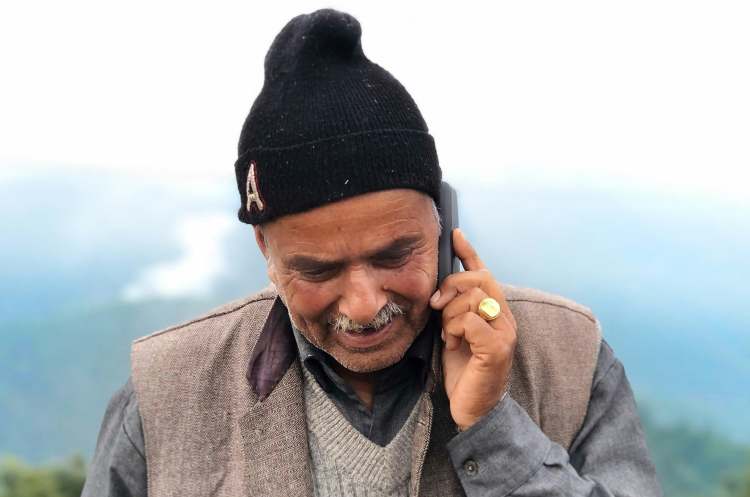
Technology has become the central force shaping economic and social transformation in the 21st century. Artificial intelligence, digital payments, and cloud services now influence how people learn, work, and participate in the economy. Yet this sweeping digital shift has left large sections of rural India out of its benefits. The country’s development story continues to be held back by a persistent urban–rural digital divide that limits access to infrastructure, skills, and innovation.
Despite accounting for over 65% of India’s population, rural areas record only 47% internet penetration, according to the Internet and Mobile Association of India (IAMAI). The gaps are not merely about connectivity. They span mobile ownership, quality of service, affordability, and the ability to use technology productively — from word processing to reporting cybercrimes. Women and girls experience even lower access, widening the gendered digital divide documented by UNESCO.
A digitally empowered rural India is no longer a development ideal but an economic necessity. Technology designed for rural realities—where incomes are low, connectivity patchy, and literacy uneven—can unlock productivity, widen markets, and improve human development indicators. India’s future growth trajectory will depend on how effectively it strengthens rural technology ecosystems.
READ I India’s smart classrooms falter amid frequent blackouts
The widening rural digital divide
Technology improvisation refers to adapting and redesigning tools for rural conditions rather than transplanting urban solutions. For India’s two-thirds rural population — engaged heavily in agriculture, crafts, and informal industries — such customised innovation can be transformative.
Agriculture offers the clearest example. Drones now support soil mapping, crop surveillance, and precision spraying, while IoT sensors track soil moisture and temperature, enabling data-driven decisions. Mobile apps such as Kisan Suvidha, AgriApp, and eNAM give farmers real-time market prices, weather alerts, and agronomy guidance in local languages. These solutions bridge information gaps that have historically depressed rural incomes.

Digital education platforms are also reshaping learning outcomes. Government initiatives such as SWAYAM, DIKSHA and PM eVIDYA deliver free, multilingual e-content. Hybrid learning models that combine offline resources with downloadable content allow students to keep learning even without stable internet access. This model is especially useful in rural schools facing teacher shortages and infrastructural constraints.
Healthcare delivery has seen similar gains. The eSanjeevani telemedicine platform has facilitated more than 200 million remote consultations (Ministry of Health), helping patients in remote villages consult doctors without travelling long distances. Low-cost diagnostic kits and mobile health vans extend the reach of services into underserved areas.
Digital governance has advanced quickly through Common Service Centres (CSCs), which provide access to government schemes, digital payments, banking, and certificates. These centres now operate in more than 2.7 lakh Gram Panchayats, improving service delivery and reducing transaction costs.
Meanwhile, fintech solutions—powered by UPI, Aadhaar-Enabled Payment Systems, and the Jan Dhan Yojana platform—have deepened financial inclusion. Rural producers now use e-commerce platforms to sell directly to consumers, bypassing intermediaries and expanding markets.
Barriers hindering technology adoption
Progress is visible but uneven. Several structural barriers continue to slow rural adoption of digital tools. The first is the digital infrastructure gap. Many rural regions still lack reliable electricity and stable broadband. Even though the government’s BharatNet programme aims to connect 2.5 lakh Gram Panchayats with high-speed broadband, last-mile connectivity remains inconsistent.
Digital literacy is another constraint. Awareness of digital tools, cyber safety, and productive ICT usage is low. The PMGDISHA programme has trained millions, but the scale of the challenge remains large given the size of India’s rural population.
Affordability limits progress as well. Devices, even at lower price points, remain expensive for rural households. Although subsidies and low-interest financing exist, uptake is uneven due to limited credit access and low awareness.
Language barriers also deter adoption. Most digital interfaces remain English-heavy, excluding users who prefer regional languages. Cultural resistance—stemming from mistrust in digital platforms or a preference for traditional methods—adds to the hesitation.
Finally, maintenance and support systems are weak. Equipment breaks down easily in rural environments, and the absence of repair centres or trained technicians leads to underutilisation.
Role of government, markets, and civil society
The government has laid the foundation for digital inclusion through programmes such as Digital India, BharatNet, PMGDISHSA, Startup India, and the Atal Innovation Mission. In agriculture, schemes like eNAM and the Agriculture Infrastructure Fund modernise markets and create digital linkages across supply chains.
But public investment alone cannot close the divide. The private sector plays a critical role in scaling affordable products and services. Telecom companies have expanded mobile connectivity, while firms such as Reliance Jio, Google, and Amazon are building digital marketplaces and cloud infrastructure. Fintech firms are expanding payments and business management tools, enabling millions to transact digitally.
Non-profits and community-based organisations bridge gaps by training rural communities in digital literacy, running computer labs, promoting health-tech and edu-tech solutions, and collaborating with government departments to design long-term, context-specific interventions. Many run solar-powered Wi-Fi hubs, digital classrooms, and community centres that keep technology functional and accessible.
Bridging the rural digital divide
The next phase of rural transformation lies in building Smart Villages—technology-enabled rural ecosystems that integrate connectivity, clean energy, and public services. Smart governance platforms can streamline welfare delivery. AI analytics can help optimise water use, crop planning, and disaster preparedness. Blockchain can improve transparency in subsidy transfers and land records. Renewable energy systems can stabilise power supply and cut costs.
This future is not theoretical. It is already emerging in pockets where technology, community ownership, and institutional support align. Each time a farmer checks a weather forecast on a mobile app, or a child attends an online lesson, or an artisan sells handicrafts on an e-commerce platform, technology is bridging a longstanding divide.
Bridging India’s rural digital divide is central to achieving inclusive growth. Technology improvisation—rooted in local needs and supported by strong infrastructure—can unlock rural productivity and human potential. But success will depend on sustained investment in broadband, digital literacy, multilingual interfaces, and repair ecosystems. India must view rural digitisation not as a welfare expense but as a strategic growth investment.
A digitally empowered rural India will expand markets, increase productivity, and create millions of new jobs. If India can bridge this divide, it will unlock one of the largest reservoirs of untapped economic potential in the world.
Akash K is an MBA Student, and Dr Deepti Sinha Associate Professor at Christ University, Bengaluru.
